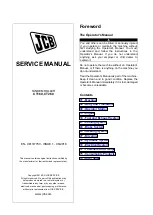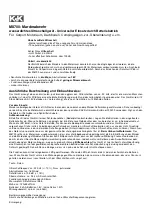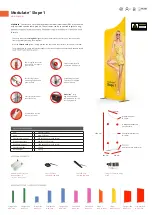
WT.025.000.001.UA.IM.0614
PAGE 11
CHLORINE HANDLING MANUAL
EVOQUA
W3T98244
WARNING: THE VENT LINE AND RELIEF LINE MUST
TERMINATE IN AN AREA GAS FUMES CANNOT CAUSE
INJURY TO PERSONNEL OR DAMAGE. DO NOT TERMI-
NATE THE VENT LINE AND RELIEF LINE AT A LOCATION
ROUTINELY USED BY PERSONNEL, SUCH AS WORK
AREAS OR PATHWAYS NOR NEAR ANY WINDOWS OR
VENTILATION SYSTEM INTAKES. IF AN AREA MEETING
THESE REQUIREMENTS IS NOT AVAILABLE, REFER TO
THE CHLORINE INSTITUTE’S CHLORINE MANUAL AND
PAMPHLET NO. 9 FOR ALTERNATE METHOD OF RELIEF
DISPOSAL.
4.5 VALVES
Yoke type auxiliary cylinder, yoke type auxiliary ton container,
and header valves are described adequately in the chlorina-
tor or vacuum regulator instruction book.
Line valves are used to isolate alternate sources of supply
(manifolded banks of ton containers or tank cars), individual
evaporators or pressure type chlorinators. Sufficient line
valves should be provided for flexibility of system operation
consistent with the recommended practice of eliminating
redundant or unnecessary valves.
Valves are usually of approximately globe pattern as shown
in Figure 14 or ball type as shown in Figure 15.
Care should be taken that only valves designed by the manu-
facturer specifically for chlorine service are used. Ball valves
must include a provision for venting the cavity in the closed
position to the upstream side.
4.6 PRESSURE GAUGES AND SWITCHES
Whenever pressure gauges and switches are used in chlorine
liquid or gas lines, they must be of the type protected by a
flanged diaphragm seal specifically designed for chlorine
service to prevent the entry of chlorine into the gauge or
switch mechanism. The fill material must be suitable for
chlorine service. The connection between the seal and
the gauge or switch must not be broken. If the connection
is inadvertently broken, the complete assembly must be
discarded and replaced, unless it can be returned to the
manufacturer for repair.
Frequently, valves are installed between chlorine lines and
the gauge or switch diaphragm seal to permit removal with-
out taking the line out of service. A means of relieving the
pressure in the isolated piping, gauge, or switch is strongly
recommended.
WARNING: RELEASING EVEN A SMALL AMOUNT OF
LIQUID CHLORINE IS DANGEROUS AND REQUIRES EX-
TREME CAUTION TO AVOID SEVERE PERSONAL INJURY.
ALWAYS USE PROTECTIVE EQUIPMENT WHEN RELIEVING
PRESSURE, EVEN IN ISOLATED CHLORINE GAS PIPING.
Since small size line valves for chlorine are not readily avail-
able, many times a header valve is used as shown in Figure 16.
Figure 14 – 3/4- and 1-Inch Line Valves
Figure 15 – Gas and Liquid Ball Valve
Figure 16 – Chlorine Pressure Gauge or
Switch Mounted on Header Valve
Содержание V10K
Страница 1: ...V10K V NOTCH CHLORINATOR BOOK NO WT 025 100 001 UA IM 0614...
Страница 2: ...V10K V NOTCH CHLORINATOR BOOK NO WT 025 100 001 UA IM 0614 W3T109612...
Страница 12: ......
Страница 23: ......
Страница 45: ...WT 025 100 001 UA IM 0614 V10K V NOTCH CHLORINATOR 32 EVOQUA W3T109612...
Страница 46: ......
Страница 61: ......
Страница 90: ......
Страница 131: ......
Страница 133: ......
Страница 134: ...CHLORINE HANDLING MANUAL Cl2 BOOK NO WT 025 000 001 UA IM 0614 W3T98244...





































